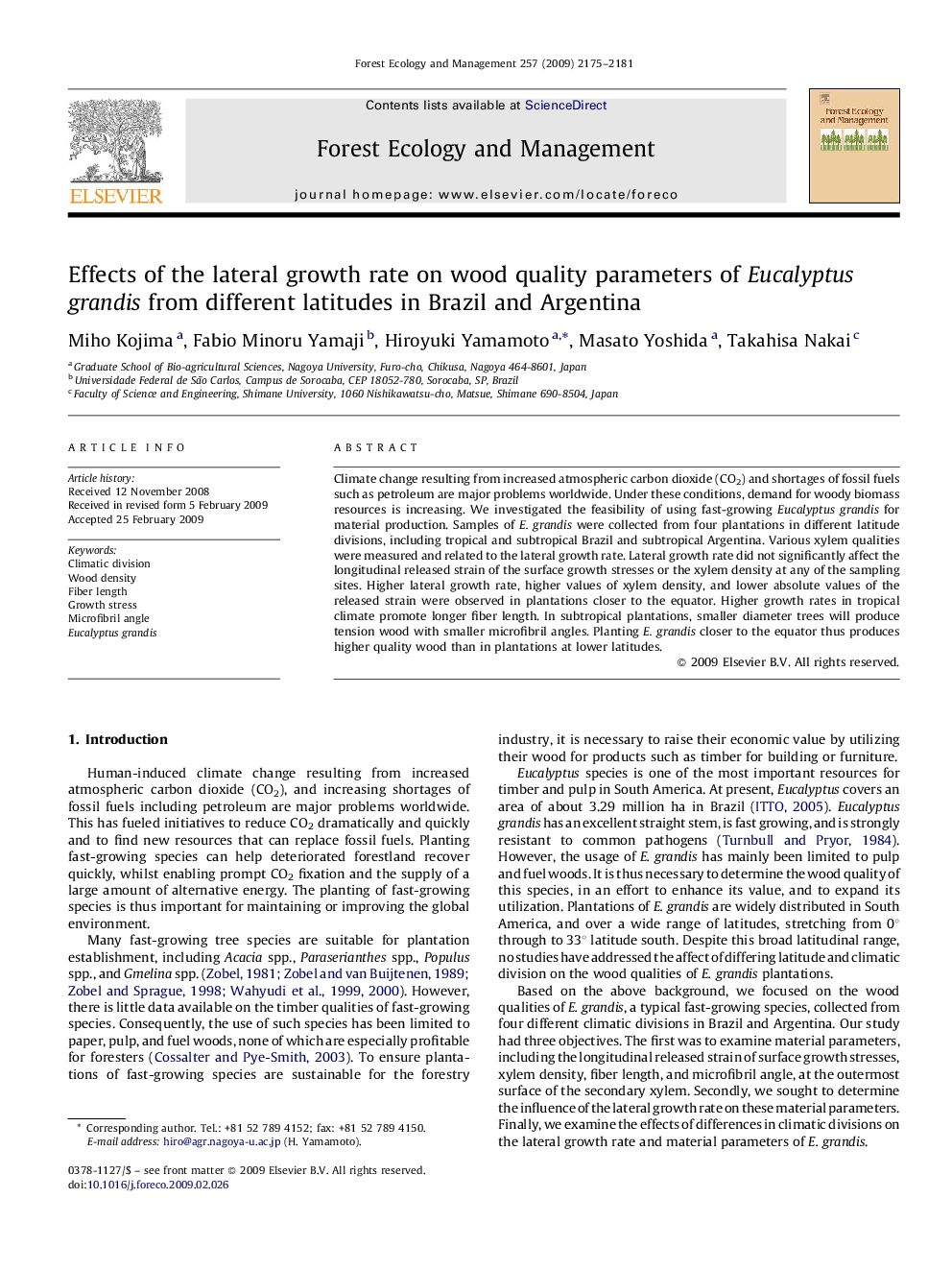| Article ID | Journal | Published Year | Pages | File Type |
|---|---|---|---|---|
| 88735 | Forest Ecology and Management | 2009 | 7 Pages |
Climate change resulting from increased atmospheric carbon dioxide (CO2) and shortages of fossil fuels such as petroleum are major problems worldwide. Under these conditions, demand for woody biomass resources is increasing. We investigated the feasibility of using fast-growing Eucalyptus grandis for material production. Samples of E. grandis were collected from four plantations in different latitude divisions, including tropical and subtropical Brazil and subtropical Argentina. Various xylem qualities were measured and related to the lateral growth rate. Lateral growth rate did not significantly affect the longitudinal released strain of the surface growth stresses or the xylem density at any of the sampling sites. Higher lateral growth rate, higher values of xylem density, and lower absolute values of the released strain were observed in plantations closer to the equator. Higher growth rates in tropical climate promote longer fiber length. In subtropical plantations, smaller diameter trees will produce tension wood with smaller microfibril angles. Planting E. grandis closer to the equator thus produces higher quality wood than in plantations at lower latitudes.
